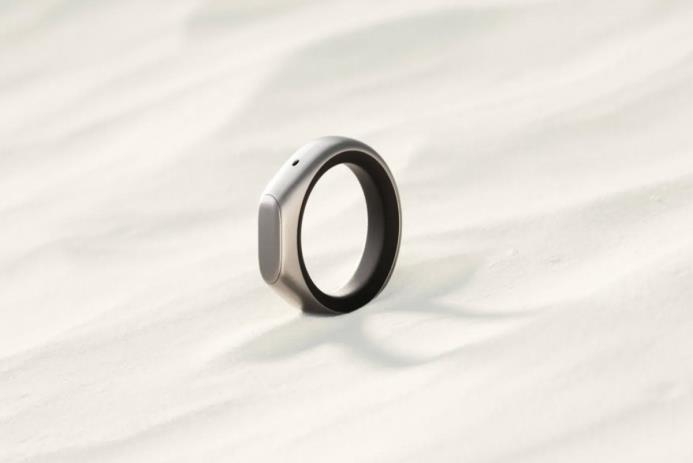
Stream Ring: The AI Smart Ring That Lets You Whisper Voice Notes and Control Music
- 05 November, 2025
What is the Stream Ring?
The Stream Ring is a new AI-powered smart ring from Sandbar, a startup founded by former CTRL-Labs employees. Designed to be worn like jewelry, the ring captures short voice notes, transcribes them, and provides a personalized AI “Inner Voice” that responds in the user’s own tone. Preorders are open now — silver is listed at $249 and gold at $299 — with U.S. shipping expected in summer 2026.
How does whisper recording work?
The Stream Ring records voice notes when you press the oval button on its exterior platform. According to Sandbar, the microphone is not always listening; it activates only when the button is pressed. Captured audio is transcribed in the companion app (initially iOS) into searchable notes. This approach aims to let you "whisper in a crowd" to record thoughts, reminders, or short conversations without drawing attention.
Key features at a glance
- Voice capture & transcription: Press-to-record voice notes that the app converts to text for later review.
- Personalized AI chatbot (Inner Voice): A conversational assistant that imitates the user’s voice using samples recorded during setup.
- Music controls: Capacitive touch sensors and haptics allow single-tap, double-tap, and swipe gestures to play/pause, skip tracks, and adjust volume.
- Design & durability: Aluminum exterior, black resin band interior, water resistance, and a small flat disc charger with a U-shaped holder.
- Battery life: Described as lasting “all day” with Bluetooth pairing available for headphones.
- Software tiers: Free tier offers unlimited notes and chats; Pro unlocks early features and unlimited interactions. Preorders include a three-month Pro trial, then $10/month to continue.
Privacy, security, and concerns
Sandbar emphasizes privacy: the microphone is described as inactive until manually engaged, and data is encrypted. Still, the notion of a wearable that stores voice data and recreates a user’s voice raises questions about consent, voice spoofing, and data retention policies. In my experience with early audio-capture wearables, the implementation details — where audio is processed (on-device vs. cloud), how long recordings are kept, and what safeguards exist against impersonation — make a huge difference for trust.
How the Inner Voice works — and why it matters
Sandbar’s Inner Voice is designed to sound like you by using recorded voice samples during setup. That personalization can make interactions feel more natural and reduce friction when reviewing notes or asking follow-up questions. However, giving an AI a realistic replica of your voice has tradeoffs: it can be comforting and efficient, but it also creates risks if the voice model is misused or accessed by bad actors. Reading primary sourcing and company policy before committing is wise. For more on the technology lineage, Sandbar’s founders previously worked at CTRL-Labs, a neural interface startup acquired by Meta, which hints at their background in wearable sensing and human-computer interaction. [Source: Sandbar Stream Ring product page]
Practical use cases — real-world examples
Here are a few plausible scenarios where Stream Ring could help:
- Writers & creators: Capture fleeting ideas while commuting or walking the dog — no phone fumbling required.
- Students: Whisper quick summaries during lectures (where allowed) and convert them to searchable study notes.
- Professionals: Record key takeaways after meetings or while traveling; the AI can suggest follow-ups or next steps.
- Accessibility: Provide hands-free note capture for users with mobility constraints.
Hypothetical example: Imagine an investigative journalist at a crowded event. They quietly press the ring to capture an important quote, then later use the transcription to verify a detail before filing. That tiny friction reduction — holding a ring instead of fishing out a phone — can change workflow efficiency.
Design, controls, and battery life
Images show a low-profile ring with a raised oval button and small microphone holes on either side. Controls combine a physical button with capacitive touch gestures and haptics: one tap to pause/interrupt, two taps to skip, and swipe gestures for volume. The charger is a compact disc with a U-shaped cradle that holds the band; Sandbar claims "all day" battery life, though exact hours and test conditions aren’t specified.
Pricing, tiers, and availability
Preorders: $249 (silver) and $299 (gold). The free tier includes unlimited notes and chats. Pro adds unlimited interactions and early access to features; preorder buyers receive a three-month Pro trial, then $10/month to continue. Shipping is slated for summer 2026 in the U.S.
Pros and cons — quick summary
- Pros: Discreet voice capture, personalized AI responses, wearable convenience, music controls, encrypted data promise.
- Cons: Privacy and voice-cloning concerns, unspecified battery duration, unclear on-device vs cloud processing, limited platform support at launch (iOS only).
Final thoughts: should you preorder?
If you regularly need hands-free, discreet note capture and are curious about personalized voice AI, the Stream Ring is intriguing. Personally, I appreciate small devices that remove friction from capturing thoughts — but I’d want clearer privacy guarantees, details about on-device processing, and independent battery-life numbers before committing. If Sandbar publishes transparent security documentation and offers granular controls over voice-model usage and retention, the ring could be a useful productivity accessory. Until then, think of it as an exciting prototype with promise and important caveats.
For more details and official specs, visit Sandbar’s Stream Ring page. Learn more in our guide to AI tools for Instagram.








